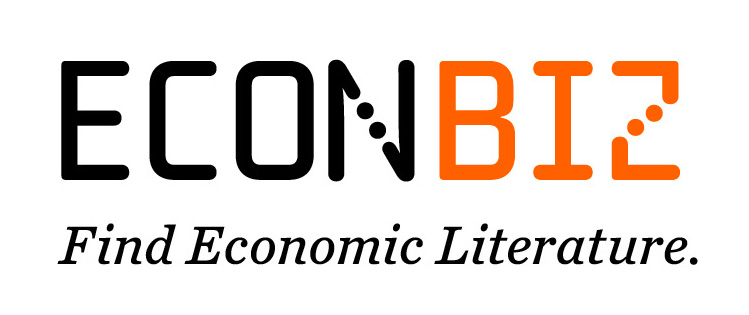| ISSN | 2615-9813 |
| ISSN (số cũ) | 1859-3682 |
Số 231 | Tháng 6/2025
Tác động của thanh khoản cổ phiếu đến tỷ lệ đòn bẩy của các doanh nghiệp niêm yết trên thị trường chứng khoán Việt Nam
Nguyễn Hữu Mạnh
Tóm tắt:
Nghiên cứu này phân tích tác động của thanh khoản cổ phiếu (TKCP) đến tỷ lệ nợ của 302 doanh nghiệp niêm yết (DNNY) trên thị trường chứng khoán Việt Nam trong giai đoạn 2013–2023. Kết quả cho thấy khi TKCP tăng dẫn đến xu hướng giảm tỷ lệ nợ vay. Nghiên cứu cũng chỉ ra rằng tác động này phụ thuộc vào các yếu tố như quy mô doanh nghiệp, khả năng sinh lời và tốc độ tăng trưởng. Cụ thể, các doanh nghiệp nhỏ và vừa, công ty có lợi nhuận thấp và tăng trưởng chậm chịu ảnh hưởng mạnh mẽ từ TKCP. Ngược lại, những doanh nghiệp lớn, có lợi nhuận cao và tăng trưởng mạnh ít bị tác động. Từ những kết quả này, nghiên cứu đề xuất cải thiện môi trường tài chính thông qua việc áp dụng chuẩn mực kế toán quốc tế, tăng cường minh bạch thông tin và hỗ trợ doanh nghiệp có thanh khoản thấp. Các nhà quản lý cần chú trọng nâng cao TKCP để tối ưu hóa cơ cấu vốn và giảm chi phí tài chính, đồng thời nhà đầu tư có thể dựa vào TKCP để đánh giá sức khỏe tài chính của doanh nghiệp.
Tài liệu tham khảo:
- Adrian, T., & Shin, H. S. (2010). Liquidity and leverage. Journal of Financial Intermediation, 19(3), 418-437.
- Amihud, Y. (2002). Illiquidity and stock returns: cross-section and time-series effects. Journal of Financial Markets, 5(1), 31-56.
- Amihud, Y., & Mendelson, H. (2012). Liquidity, the value of the firm, and corporate finance. Journal of Applied Corporate Finance, 24(1), 17-32.
- Andres, C., Cumming, D., Karabiber, T., & Schweizer, D. (2014). Do markets anticipate capital structure decisions? Feedback effects in equity liquidity. Journal of Corporate Finance, 27, 133-156.
- Alti, A. (2006). How Persistent Is the Impact of Market Timing on Capital Structure? The Journal of Finance, 61(4), 1681-1710.
- Baker, M., & Wurgler, J. (2002). Market timing and capital structure. The Journal of Finance, 57(1), 1-32.
- Batten, J., & Vo, X. V. (2019). Determinants of bank profitability—Evidence from Vietnam. Emerging Markets Finance and Trade, 55(6), 1417-1428.
- Bekaert, G., & Harvey, C. R. (2000). Foreign speculators and emerging equity markets. The journal of finance, 55(2), 565-613.
- Butler, A. W., Grullon, G., & Weston, J. P. (2005). Stock market liquidity and the cost of issuing equity. Journal of Financial and Quantitative Analysis, 40(2), 331-348.
- Brogaard, J., Li, D., & Xia, Y. (2017). Stock liquidity and default risk. Journal of Financial Economics, 124(3), 486-502.
- Chang, X., Dasgupta, S., & Hilary, G. (2006). Analyst coverage and financing decisions. The Journal of Finance, 61(6), 3009-3048. Doi: https://doi.org/10.1111/j.1540-6261.2006.01010.x
- Chen, Z., Gao, K., & Huang, W. (2020). Stock liquidity and excess leverage. Finance Research Letters, 32, 101178.
- Dang, T. L., Ly Ho, H., Dzung Lam, C., Thao Tran, T., & Vo, X. V. (2019). Stock liquidity and capital structure: International evidence. Cogent Economics & Finance, 7(1), 1587804.
- De Jong, A., Verbeek, M., & Verwijmeren, P. (2011). Firms’ debt–equity decisions when the static tradeoff theory and the pecking order theory disagree. Journal of Banking & Finance, 35(5), 1303-1314.
- Fang, V. W., Noe, T. H., & Tice, S. (2009). Stock market liquidity and firm value. Journal of Financial Economics, 94(1), 150-169.
- Fernández, E., López-López, V., Jardón, C. M., & Iglesias-Antelo, S. (2022). A firm-industry analysis of services versus manufacturing. European Research on Management and Business Economics, 28(1), 100181.
- Fosu, S. (2013). Capital structure, product market competition and firm performance: Evidence from South Africa. The Quarterly Review of Economics and Finance, 53(2), 140-151.
- Hennessy, C. A., & Whited, T. M. (2005). Debt dynamics. The journal of finance, 60(3), 1129-1165.
- Jensen, M. C. (1986). Agency costs of free cash flow, corporate finance, and takeovers. The American economic review, 76(2), 323-329.
- Jiang, F., Ma, Y., & Shi, B. (2017). Stock liquidity and dividend payouts. Journal of Corporate Finance, 42, 295-314.
- Kraus, A., & Litzenberger, R. H. (1973). A state-preference model of optimal financial leverage. Journal of Finance, 28(4), 911-922.
- Lipson, M. L., & Mortal, S. (2009). Liquidity and capital structure. Journal of Financial Markets, 12(4), 611-644.
- MacKay, P., & Phillips, G. M. (2005). How does industry affect firm financial structure? The review of financial studies, 18(4), 1433-1466.
- Marks, J. M., & Shang, C. (2021). Does stock liquidity affect corporate debt maturity structure? Quarterly Journal of Finance, 11(01), 2150005.
- Myers, S. C. (1977). Determinants of corporate borrowing. Journal of financial economics, 5(2), 147-175.
- Myers, S. C. (1984). The capital structure puzzle. Journal of Finance, 39(3), 575-592.
- Myers, S. C., & Majluf, N. S. (1984). Corporate financing and investment decisions when firms have information that investors do not have. Journal of Financial Economics, 13(2), 187-221.
- Nadarajah, S., Ali, S., Liu, B., & Huang, A. (2018). Stock liquidity, corporate governance, and leverage: New panel evidence. Pacific-Basin Finance Journal, 50, 216-234.
- Nadarajah, S., Duong, H. N., Ali, S., Liu, B., & Huang, A. (2021). Stock liquidity and default risk around the world. Journal of financial markets, 55, 100597.
- Sharma, P., & Paul, S. (2015). Does liquidity determine capital structure? Evidence from India. Global Business Review, 16(1), 84-95.
- Rajan, R. G., & Zingales, L. (1995). What do we know about capital structure? Some evidence from international data. The journal of Finance, 50(5), 1421-1460.
- Tran, L. T. H., Hoang, T. T. P., & Tran, H. X. (2018). Stock liquidity and ownership structure during and after the 2008 Global Financial Crisis: Empirical evidence from an emerging market. Emerging Markets Review, 37, 114-133.
- Trinh, H. H., Nguyen, C. P., Hao, W., & Wongchoti, U. (2021). Does stock liquidity affect bankruptcy risk? DID analysis from Vietnam. Pacific-Basin Finance Journal, 69, 101634.
- Trương Đông Lộc, Nguyễn Thị Thu Vỹ, & Võ Văn Dứt (2015). Mối quan hệ giữa thanh khoản cổ phiếu và cấu trúc vốn của công ty: Nghiên cứu thực nghiệm tại Việt Nam, Tạp chí Công nghệ Ngân hàng, 117, 16-26.
- Vo, X. V., & Bui, H. T. (2016). Liquidity, liquidity risk, and stock returns: evidence from Vietnam. International Journal of Monetary Economics and Finance, 9(1), 67-89.
- Vo, X. V. (2017). Do foreign investors improve stock price informativeness in emerging equity markets? Evidence from Vietnam. Research in International Business and Finance, 42, 986-991.
- Võ Thị Thúy Anh, & Phan Trần Minh Hưng (2019). Ảnh hưởng của thanh khoản cổ phiếu lên cấu trúc vốn của các công ty niêm yết trên thị trường chứng khoán Việt Nam, Tạp chí Khoa học Kinh tế, 7(04), 85-99.
- Udomsirikul, P., Jumreornvong, S., & Jiraporn, P. (2011). Liquidity and capital structure: The case of Thailand. Journal of Multinational Financial Management, 21(2), 106-117.
- Vo, X. V. (2022). Can liquidity explain dividends? Cogent Business & Management, 9(1), 2018906.
- Vuong, G. T. H., Nguyen, M. H., & Keung Wong, W. (2022a). CBOE volatility index (VIX) and corporate market leverage. Cogent Economics & Finance, 10(1), 2111798.
- Vuong, T. H. G., Dao, T. H., Le, T. T. H., & Nguyen, H. M. (2022b). Debts and corporate cash holdings: Evidence from ASEAN-5. Investment Management & Financial Innovations, 19(1), 186.
- Vuong, T. H. G., Wu, Y. C., Weng, T. C., Nguyen, H. M., & Vo, X. V. (2023). Capital structure choices and stock market volatility: Evidence from Chinese listed firms. The Chinese Economy, 56(1), 25-49.
- Vuong, T. H. G., Nguyen, V. P., & Nguyen, H. M. (2025). Does stock liquidity matter for corporate cash holdings? Insights from a transition economy. Global Finance Journal, 101102.
The Impact of Stock Liquidity on the Leverage Ratio of Listed Firms in the Vietnamese Stock Market
Abstract:
This study investigates the impact of stock liquidity on the leverage ratio of 302 publicly listed firms on the Vietnamese stock market over the period 2013–2023. The findings reveal a negative relationship between stock liquidity and corporate debt levels, indicating that higher stock liquidity is associated with a reduction in leverage. Furthermore, the study shows that this effect is contingent upon firm-specific characteristics such as firm size, profitability, and growth rate. In particular, small- and medium-sized enterprises, low-profitability firms, and slow-growing firms are more significantly affected by stock liquidity, whereas large, highly profitable, and rapidly growing firms exhibit a weaker response. Based on these results, the study recommends enhancing the financial environment by adopting international accounting standards, promoting information transparency, and providing support to firms with low stock liquidity. Corporate managers are advised to improve stock liquidity as a means of optimizing capital structure and reducing financial costs. Investors, meanwhile, may consider stock liquidity as a useful indicator of a firm's financial health.







